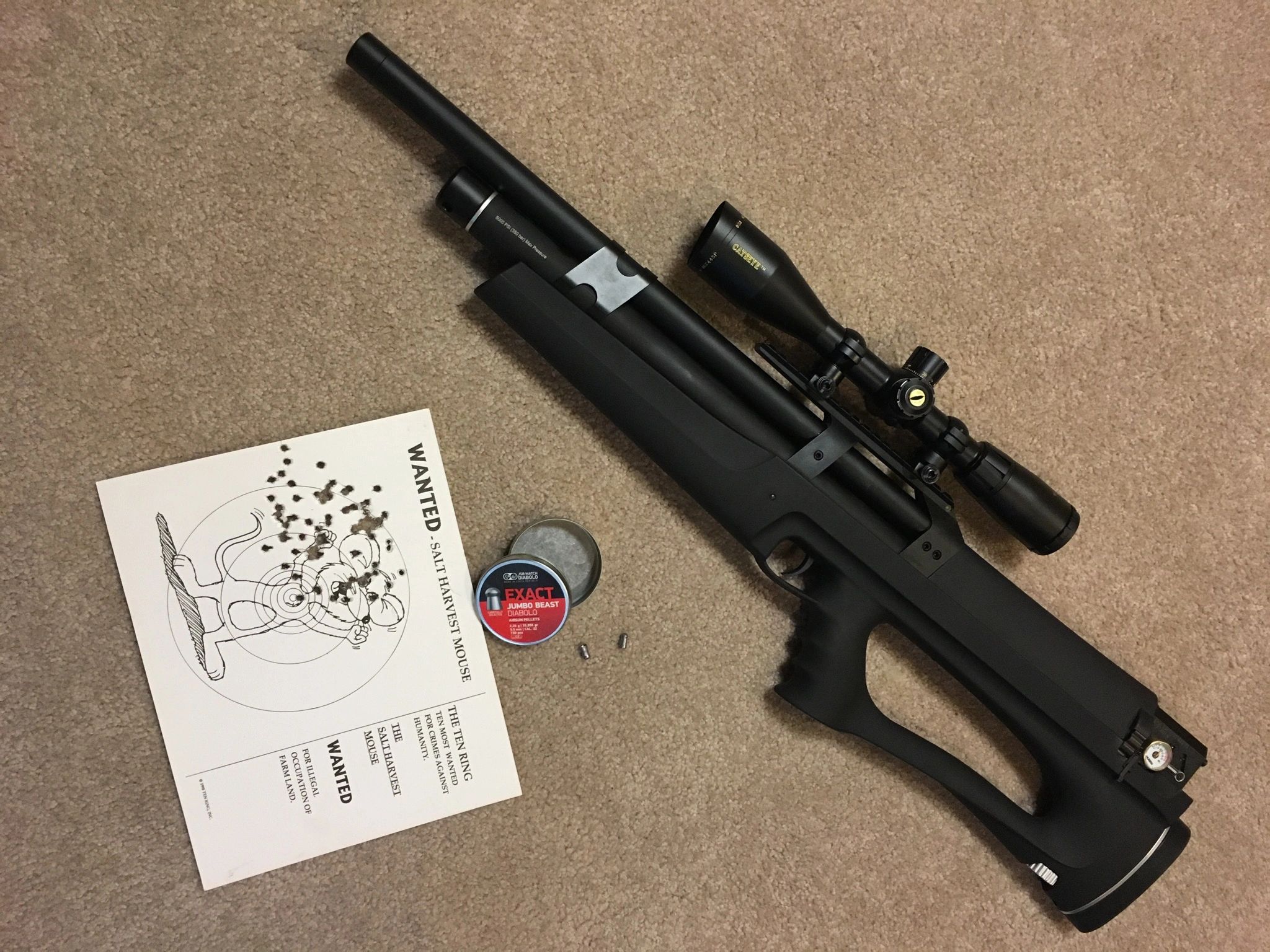 Huben GK1 Pistol
Huben GK1 Pistol 
 .22cal vs. .25cal
.22cal vs. .25cal
Hollow Point Expansion
for Close and Mid Range Pesting
The GK1 pistol is a fascinating piece of equipment, in that such a small thing has so much power, and is semi-auto!
I don't have the funds, but I have to have a goal to save up, so.... —
to help me in my decision process which caliber, I did a little ballistic comparison of
.22cal vs. .25cal —
so see which caliber would give meexpanding hollow point performance
for close to mid range pesting
(rats, squirrels, pigeons, etc.).
■ The most important condition for hollow points to expand on impact is their impact velocity (IV).
Assuming the lead is reasonably soft (below the CPHP hardness), HP usually will expand well at 800fps impact velocity (IV).
At 750fps IV many still do expand some.
At 700fps IV some still do expand some.
Below that all bets are off (until I have ran more terminal ballistic test
Here are the impact velocity results ChairGun spit out for me:
● At 10 yard ratting range the .22cal Polymag clearly produces a much higher impact velocity (850fps), virtually guaranteeing hollow point expansion.
The others all start out below 800, though because of their higher BC they don't loose as much velocity on their way out to 10y, so they all hit the rats between 750 to 780fps. I would definitely expect HP expansion with the .25 Polymag.
● At 25 yard mid range pesting the picture changes. Now the .22cal Polymag (due to its low BC) has shed velocity much quicker than both caliber slugs. These three now all impact with nearly the same IV of 750 to 770fps. ➔ HP expansion is still likely, with the .25cal probably expanding more due to its larger impact surface.
The .25 Polymag is down to 700 IV, and HP expansion will be less and/or less likely.
(a) For close range ratting the .22cal seems to be the better choice, considering that it would give significantly more shots per fill.
(b) For mid range pesting the .22 pellet and slug are about even with the .25 slug. Which would give an edge to the .25 slug as it will have more impact energy.
However, if the shots are angled upwards (birds in trees), I could't use slugs — due to their high BC they would fly far and hit much harder than a low BC pellet!
(c) Another consideration are the ages-ago announced and still not delivered FX SLULLETS (or FX PELLUGS).
From the photos they are slugs, comparatively light, and with a huge hollow point. If they ever arrive at production status, these will be very light slugs that are highly expanding, and that will have a much higher impact velocity in .22cal than in .25cal, resulting in more HP expansion.
So, again, .22cal seems to be better for this scenario.
(d) The much higher shotcount of the .22 is also an important consideration — as ratting will quickly empty the magazine — and the tiny air reservoir!
I have the same power numbers that you all have from the different videos and sales pages.
.22cal: they say 4-33FPE
.25cal: they say 4-38FPE
It seems like the GK1 pistol in .22cal has typical PCP rifle power.
But in .25cal is is rather underpowered in comparison to PCP rifles.
Matthias
● Projectiles and their color coding:
Red: .22cal Polymag | 30FPE | 0.021BC
Green: .22cal Hybrid | 30FPE | 0.060BC
Blue: .25cal Polymag | 36FPE | 0.028BC
Purple: .25cal Hybrid | 36FPE | 0.070BC
(These are conservative BC numbers.)
Last edited:

